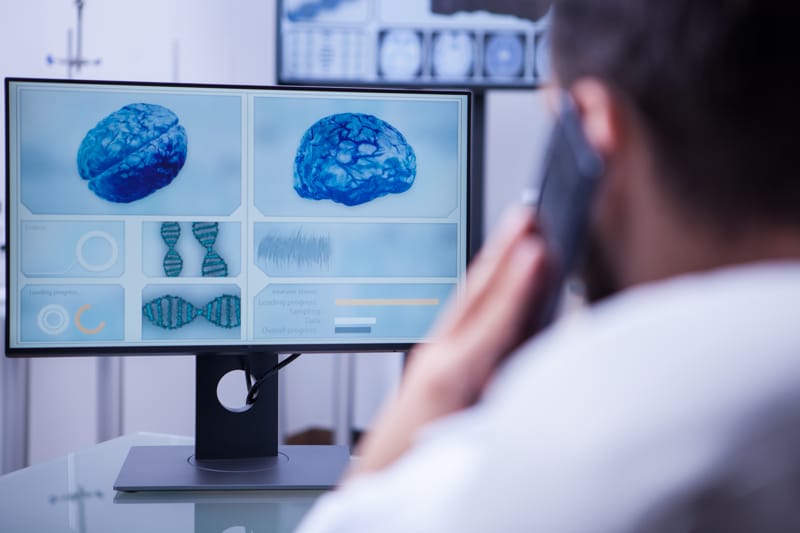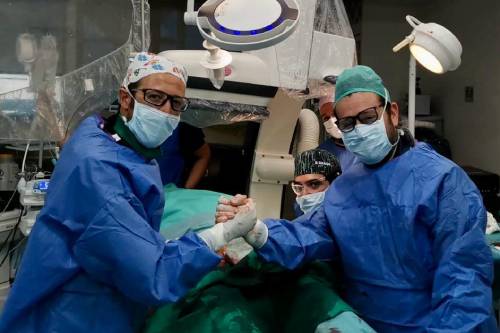
Craniocerebral and spinal trauma
Craniocerebral and spinal trauma refer to injuries that affect the head and spinal cord, respectively. Pediatric head injury is common and occurs mostly due to falls from heights, but motor vehicle accidents cause the severest form of injury. Child abuse is increasingly becoming recognized as a cause of pediatric head injury. Management is multidisciplinary, and prompt resuscitation and cervical spine protection are key to survival. Intracranial hematomas should be aggressively managed. Education and enforcement of legislation on vehicle safety rules are important in preventive strategies. Pediatric spinal cord injury presents an enormous challenge, not only to the neurosurgeon but also to the health and economic resources of any nation. The care of the spinally disabled child is far from ideal in many settings, and personnel, facilities, and dedicated centers for spinal care are scarce, needing urgent attention
Minimal invasive spinal surgery
Minimally invasive spine surgery (MIS) is a type of surgery on the bones of the spine that uses smaller incisions than standard surgery. This often causes less damage to muscles and other nearby tissues. It can lead to less pain and a faster recovery after surgery 1. Standard spine surgery is called open surgery. This uses a long incision in the back. The muscles and soft tissues around the spine would have to be moved. During MIS, the healthcare provider makes a smaller incision. He then inserts a device called a tubular retractor. This is a rigid tube-shaped tool. Creates a tunnel to the problem area of the spine. Gently push on the muscle and soft tissue around the area. The surgeon can then put small tools through the tunnel to work on the spine. The surgeon also uses a special surgical microscope and views real-time X-ray images of the spine. Surgeons can use MIS for some types of spine surgery. These include lumbar discectomy, laminectomy and spinal fusion 12.
Neuro – oncological surgery (cerebral – spina)
Surgical management of spinal metastases is a treatment option for patients with cancer who have metastatic spread to the spinal column. It can cause a number of sequelae including pain, instability, and neurologic deficit. If left untreated, progressive myelopathy results in the loss of motor, sensory, and autonomic functions. The goal of surgery is to achieve circumferential decompression of the neural elements while reconstructing and immediately stabilizing the spinal column. This has been made possible by the use of different surgical approaches and the exploitation of a burgeoning array of internal fixation devices. More recently, minimally invasive surgical techniques, such as endoscopy, kyphoplasty/vertebroplasty, and stereotactic radiosurgery, have been added to the surgeon’s armamentarium. Treatment for spinal metastases is largely palliative. Only in rare cases, usually with renal cell carcinoma, can cure be the goal if the spine is the only known site of metastasis
Congenital Brain and Spine Malformations: Treatment
A multidisciplinary approach is often beneficial for addressing children with congenital brain and spine malformations. Neurosurgeons, craniofacial plastic specialists and geneticists, among others, may be called upon to develop your child’s treatment plan and determine what kind of surgery may be appropriate.
If a congenital brain or spine malformation is mild and not causing any signs or symptoms in your child, the neurosurgeon may recommend observation, which means regular visits and testing to monitor your child’s condition.
If your child does undergo surgery, follow-up care is extremely important in tracking the progress of your child’s recovery. Your pediatric neurosurgeon will schedule follow-up appointments to ensure your child is making the best recovery possible.
Hydrocephalus
Hydrocephalus is a condition where there is an accumulation of cerebrospinal fluid in the brain, which can lead to symptoms such as chronic headaches, nausea, difficulty focusing, and changes in personality . The diagnosis of hydrocephalus involves a detailed medical history, physical examination, and imaging tests such as CT scans and MRIs 1. The most common treatment for hydrocephalus is the surgical insertion of a device called a shunt, which diverts excess cerebrospinal fluid to another part of the body Another treatment option is endoscopic third ventriculostomy, which creates a new drainage pathway for the excess fluid
It is important to note that hydrocephalus is a complex condition, and treatment options may vary depending on the underlying cause of the condition and the severity of the symptoms. It is always best to consult with a neurologist or other medical professional for personalized advice and treatment options
Peripheral Nerve Pathology
Peripheral nerve pathology refers to the disease or damage of the peripheral nerves, which are the nerves that connect the brain and spinal cord to the rest of the body . The pathology of peripheral neuropathy follows three basic patterns: Wallerian degeneration, distal axonopathy, and segmental demyelination 1. The causes of peripheral neuropathy can be varied, including diabetes, Guillain-Barré Syndrome, inherited neuropathies, vasculitic neuropathy, and more . The diagnosis of peripheral neuropathy involves a thorough physical examination, nerve conduction studies, and other tests . Treatment options depend on the underlying cause of the neuropathy and may include medications, physical therapy, and surgery







